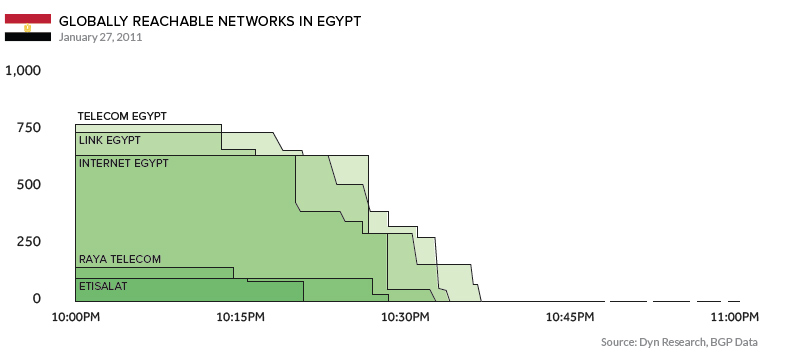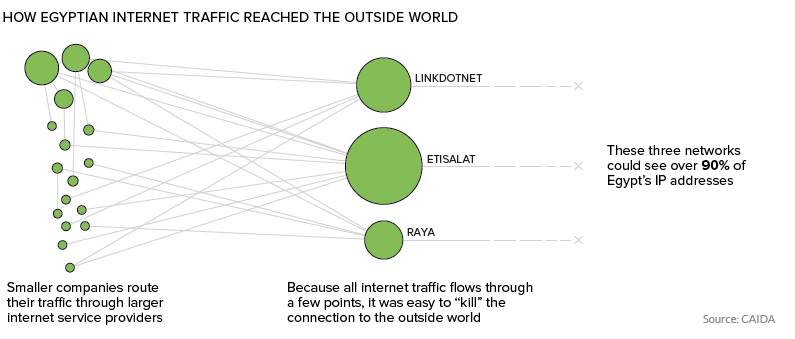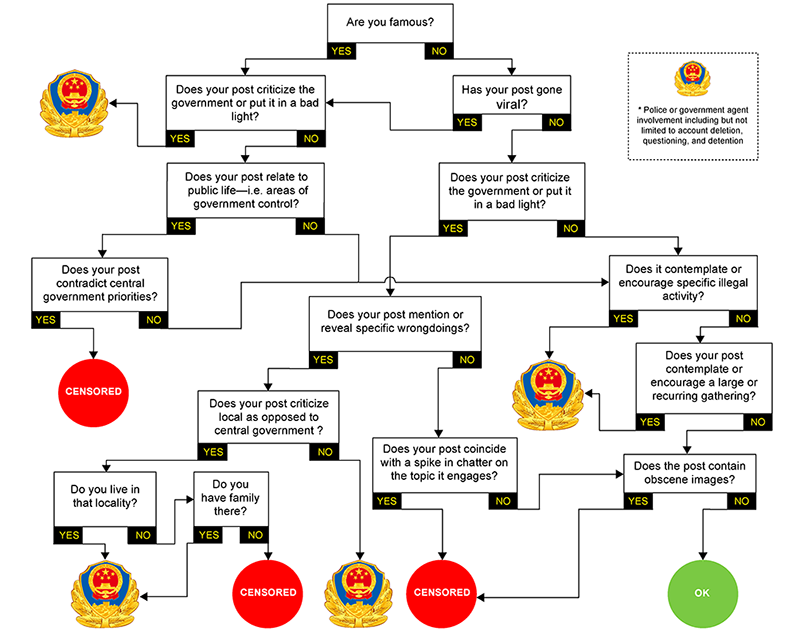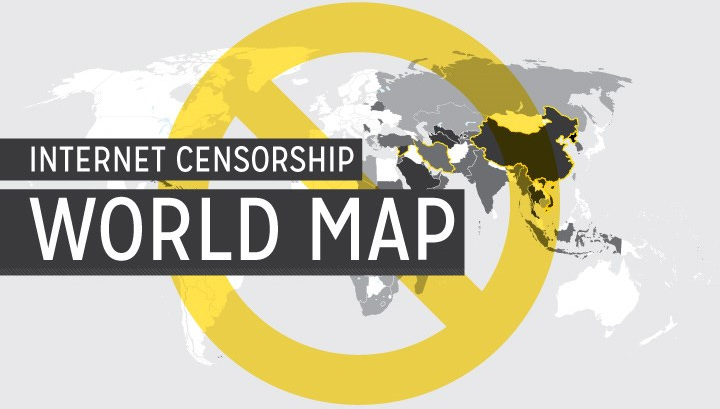Technology
Map: Internet Censorship Around the World
In January 2011, Egyptian activists, inspired by a successful uprising in Tunisia, began organizing a demonstration using Facebook. In a matter of days, thousands of protesters – who learned about the event through the social media platform – gathered in Cairo’s Tahrir Square to protest the longstanding Mubarak regime.
Then, in an attempt to quash civil unrest, the Egyptian government soon took the bold step of cutting off the country’s internet access. As the size of protests swelled from thousands to millions of people, the Mubarak regime quickly realized their mistake: never cut off a millennial’s internet access.
Mubarak was ultimately forced to resign after just 18 days of massive protests, but in that time Egypt’s Arab Spring demonstrated two major things: (1) the incredible organizing power of the internet, and (2) the how quickly a government could slam the door on the free flow of information.

The Egyptian government was able to quickly and effectively shut down the chokepoints that connect its citizens to the outside world. Etisalat, for example, is a centrally located routing system that could see up to 58% of Egypt’s IP addresses.
In other words, Mubarak was essentially able to blockade every website in the world by making a few simple phone calls.

A New Era Of Internet Censorship
Egypt’s dramatic internet shutdown became a new template for other precarious regimes, but also sparked a broader global conversation around online censorship.
Today’s infographic comes to us from WhoIsHostingThis and it provides a detailed look at varying levels of internet censorship around the world today.

Internet users in North America and Europe enjoy relatively unfettered access to online content, while most countries in Asia, Africa, and the Middle East have some level of censorship. Torrenting is restricted in almost every country in the world, with a notable exception being Switzerland, where a laissez-faire approach is applied to downloading content for personal consumption.
It’s also worth noting that this map does not address government surveillance, which is ubiquitous even in countries with high levels of internet freedom.
The Anti-Information Age
If you want to liberate a country, give them the internet
–Wael Ghonim, Egyptian internet activist
Much of the world’s population accesses an internet that is at least partially censored. Countries have different motivations for restricting access and filtering content. Below are a few high-profile examples.
China
When most people think of internet censorship, China springs to mind. This makes sense as the country has a small army (upwards of 50,000 people) monitoring internet activity at all times. Also, much like Egypt, the government forces all online traffic through a mere three central routing systems. This makes it easy for censors to sift through all data entering and leaving the country.
China’s censorship apparatus is so advanced, it can take a very granular approach to repression and enforcement.

Turkey
The country’s swelling blacklist of 100,000 websites, coupled with harsh penalties for any whiff of anti-government sentiment, have created an extremely restrictive environment for Turkish internet users.
Ethiopia
In 2016, the government of Ethiopia blocked access to social networking sites to prevent cheating during the university entrance exam period.
North Korea
Unauthorized surfing of the internet is a dangerous activity in the Hermit Kingdom. The primary smartphones, tablets, operating systems, and browsers used in the country were all developed by the government, and content on the 5,000 or so accessible websites is tightly controlled.
Slipping Through the Firewall
Even when censoring measures are pervasive and effective, people continually find ways to slip between the cracks. For years, people have used proxy servers and virtual private networks (VPNs) to access content beyond their country’s censorship wall, but censors are getting better at discovering proxy servers and simply blocking them as they would any other site.
As a result, newer techniques are gaining popularity:
Steganography
Steganography is the science of hiding information. Basically, an innocuous file like an image can be stealthily encoded with information to evade detection by censors. Even changing a single pixel on a series of images can be used to relay a message, provided the recipient knows what to look for.
Refraction Networking
This circumvention tool uses partnerships with ISPs and other network operators to provide Internet freedom to users. Rather than trying to hide individual proxies, whole networks outside the censored country can become a conduit for the free flow of information.
Brands
How Tech Logos Have Evolved Over Time
From complete overhauls to more subtle tweaks, these tech logos have had quite a journey. Featuring: Google, Apple, and more.

How Tech Logos Have Evolved Over Time
This was originally posted on our Voronoi app. Download the app for free on iOS or Android and discover incredible data-driven charts from a variety of trusted sources.
One would be hard-pressed to find a company that has never changed its logo. Granted, some brands—like Rolex, IBM, and Coca-Cola—tend to just have more minimalistic updates. But other companies undergo an entire identity change, thus necessitating a full overhaul.
In this graphic, we visualized the evolution of prominent tech companies’ logos over time. All of these brands ranked highly in a Q1 2024 YouGov study of America’s most famous tech brands. The logo changes are sourced from 1000logos.net.
How Many Times Has Google Changed Its Logo?
Google and Facebook share a 98% fame rating according to YouGov. But while Facebook’s rise was captured in The Social Network (2010), Google’s history tends to be a little less lionized in popular culture.
For example, Google was initially called “Backrub” because it analyzed “back links” to understand how important a website was. Since its founding, Google has undergone eight logo changes, finally settling on its current one in 2015.
| Company | Number of Logo Changes |
|---|---|
| 8 | |
| HP | 8 |
| Amazon | 6 |
| Microsoft | 6 |
| Samsung | 6 |
| Apple | 5* |
Note: *Includes color changes. Source: 1000Logos.net
Another fun origin story is Microsoft, which started off as Traf-O-Data, a traffic counter reading company that generated reports for traffic engineers. By 1975, the company was renamed. But it wasn’t until 2012 that Microsoft put the iconic Windows logo—still the most popular desktop operating system—alongside its name.
And then there’s Samsung, which started as a grocery trading store in 1938. Its pivot to electronics started in the 1970s with black and white television sets. For 55 years, the company kept some form of stars from its first logo, until 1993, when the iconic encircled blue Samsung logo debuted.
Finally, Apple’s first logo in 1976 featured Isaac Newton reading under a tree—moments before an apple fell on his head. Two years later, the iconic bitten apple logo would be designed at Steve Jobs’ behest, and it would take another two decades for it to go monochrome.
-

 Markets1 week ago
Markets1 week agoRanked: The Largest U.S. Corporations by Number of Employees
-

 Green3 weeks ago
Green3 weeks agoRanked: Top Countries by Total Forest Loss Since 2001
-

 Money2 weeks ago
Money2 weeks agoWhere Does One U.S. Tax Dollar Go?
-

 Automotive2 weeks ago
Automotive2 weeks agoAlmost Every EV Stock is Down After Q1 2024
-

 AI2 weeks ago
AI2 weeks agoThe Stock Performance of U.S. Chipmakers So Far in 2024
-

 Markets2 weeks ago
Markets2 weeks agoCharted: Big Four Market Share by S&P 500 Audits
-

 Real Estate2 weeks ago
Real Estate2 weeks agoRanked: The Most Valuable Housing Markets in America
-

 Money2 weeks ago
Money2 weeks agoWhich States Have the Highest Minimum Wage in America?















